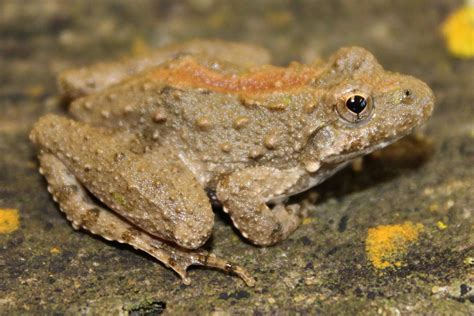Imagine a warm summer day by a pond in Virginia or North Carolina. As you sit near the water’s edge, you notice small frogs darting around on the surface, effortlessly jumping from one spot to another. But these are not just any ordinary frogs; they are cricket frogs, masters of a unique skill that has captivated researchers and nature enthusiasts alike.
Meet Jake Socha, an esteemed Mechanical Engineering Professor leading a team of researchers delving into the mysterious world of cricket frogs. These tiny creatures have a remarkable ability known as “skittering,” which involves making successive jumps on water—a feat that defies conventional expectations.
“Skittering is not actually a well-defined word for this behavior…”
Talia Weiss, a dedicated graduate researcher working with Professor Socha, sheds light on the origins of this intriguing behavior. The term “skittering” was first used in 1949 by a naturalist to describe frogs’ unique locomotion pattern. Since then, it has become synonymous with the mesmerizing way cricket frogs move across the water’s surface.
The research team’s groundbreaking findings were recently published in the Journal of Experimental Biology, marking a significant milestone in understanding this enigmatic phenomenon. By unraveling the secrets behind skittering, scientists aim to provide a more precise and scientific definition for this captivating behavior.
“Our lab has studied a range of animals…motivating our curiosity to understand…”
Through meticulous observation and high-speed videography techniques, Socha and his colleagues discovered surprising insights about how cricket frogs navigate their aquatic environment. Contrary to popular belief, these amphibians do not elegantly glide above the water while skittering; instead, they execute what can be likened to a plop-and-jump motion known as “porpoising.”
The team’s use of advanced technology revealed that each time a frog takes off from the water’s surface, its entire body submerges before resurfacing—an action reminiscent of marine mammals leaping gracefully through ocean waves. This novel perspective challenges previous assumptions about how these agile creatures move across ponds and streams.
“It’s fascinating how easily we can be fooled by fast animal movements…”
By slowing down footage captured during their experiments, researchers uncovered intricate details about the frog’s leap cycle—from takeoff to recovery after each jump. The graceful extension and retraction of limbs play an essential role in propelling the frog through its watery domain with remarkable agility.
This newfound understanding goes beyond mere biological curiosity; it offers valuable insights for future technological advancements inspired by nature. Bio-inspired robotics and innovative aquatic systems could benefit greatly from incorporating principles gleaned from studying nature’s experts—the humble yet extraordinary cricket frog.
In essence, every leap taken by these unassuming creatures represents not just a physical marvel but also a potential blueprint for cutting-edge technologies that could revolutionize fields such as robotics and environmental monitoring systems. The next time you see ripples forming on still waters and hear the distinctive chirping call of cricket frogs nearby—remember that beneath their unassuming appearance lies a world of unparalleled wonder waiting to be explored.

